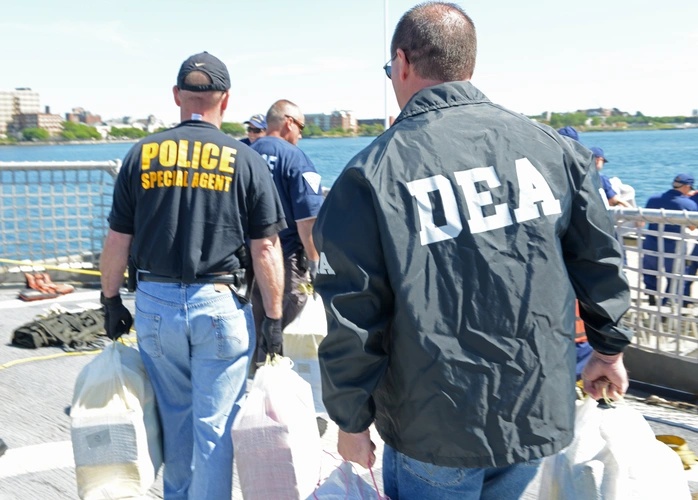Today's Headlines and Commentary
Published by The Lawfare Institute
in Cooperation With

Josh Rogin over at Foreign Policy picks up Ben's post on the appearance of NDAA language in the government's brief in Al Madhwani. Alan Cowell at the Times reports from London that four Islamic militants have admitted that they were involved in a plot to bomb the London Stock Exchange. Today, NATO spokesman, Lt. Col. Jimmie E. Cummings confirmed the existence of a report summarizing the views of Taliban detainees, to which the BBC has been given access. Rod Nordland and Declan Walsh at the Times cover the announcement. Yesterday, the National Science Advisory Board for Biosecurity recommended that Nature and Science edit manuscripts detailing experiments that have led to the creation of an even more lethal bird flu virus to remove information that could be exploited. This Economist piece from December discusses the potential for such a virus to be used in bioterrorism, and Sonia wrote about this back in December as well. Some excerpts from the Board's explanation:Three of the five cyber security plans (required to be submitted by grantees) which we reviewed were incomplete, and did not always sufficiently describe security controls and how they were implemented. Department officials noted that Federal involvement was limited when managing grants, but they had required grant recipients to develop cyber security plans that supported the strategy outlined in the grant application and described a minimum set of security elements, such as risk assessment and system ecurity incident response. However, a Department review revealed that 36 of 99 cyber security approaches submitted as part of the grant application lacked one or more required elements. In our review of security plans, we noted that the plans did not always include sufficient information related to risk assessments and/or other important elements, and, that they did not fully address many of the weaknesses initially identified by the Department.
Risk assessment of public harm is challenging because it necessitates consideration of the intent and capability of those who wish to do harm, as well as the vulnerability of the public and the status of public-health preparedness for both deliberate and accidental events. We found the potential risk of public harm to be of unusually high magnitude. In formulating our recommendations to the government, scientific journals and to the broader scientific community, we tried to balance the great risks against the benefits that could come from making the details of this research known. Because the NSABB found that there was significant potential for harm in fully publishing these results and that the harm exceeded the benefits of publication, we therefore recommended that the work not be fully communicated in an open forum. The NSABB was unanimous that communication of the results in the two manuscripts it reviewed should be greatly limited in terms of the experimental details and results. This is an unprecedented recommendation for work in the life sciences and our analysis was conducted with careful consideration both of the potential benefits of publication and of the potential harm that could occur from such a precedent. Our concern is that publishing these experiments in detail would provide information to some person, organization or government that would help them to develop similar mammal-adapted influenza A/H5N1 viruses for harmful purposes. We believe that as scientists and as members of the general public, we have a primary responsibility 'to do no harm' as well as to act prudently and with some humility as we consider the immense power of the life sciences to create microbes with novel and unusually consequential properties. At the same time, we acknowledge that there are clear benefits to be realized for the public good in alerting humanity of this potential threat and in pursuing those aspects of this work that will allow greater preparedness and the potential development of novel strategies leading to future disease control. By recommending that the basic result be communicated without methods or details, we believe that the benefits to society are maximized and the risks minimized. Although scientists pride themselves on the creation of scientific literature that defines careful methodology that would allow other scientists to replicate experiments, we do not believe that widespread dissemination of the methodology in this case is a responsible action. The life sciences have reached a cross-roads. The direction we choose and the process by which we arrive at this decision must be undertaken as a community and not relegated to small segments of government, the scientific community or society. Physicists faced a similar situation in the 1940s with nuclear weapons research, and it is inevitable that other scientific disciplines will also do so. Along with our recommendation to restrict communication of these particular scientific results, we discussed the need for a rapid and broad international discussion of dual-use research policy concerning influenza A/H5N1 virus with the goal of developing a consensus on the path forward. There is no doubt that this is a complex endeavour that will require diligent and nuanced consideration. There are many important stakeholders whose opinions need to be heard at this juncture. This must be done quickly and with the full participation of multiple societal components.John Hudson at the Atlantic Wire says that we may get to see the post-mortem photos of Osama bin Laden, after all. For more interesting law and security-related articles, follow us on Twitter, visit the Georgetown Center on National Security and the Law’s Security Law Brief, Fordham Law’s Center on National Security’s Morning Brief, and Fordham Law’s Cyber Brief. Email us noteworthy articles we may have missed at wakeman.lawfare@gmail.com and singh.lawfare@gmail.com.





